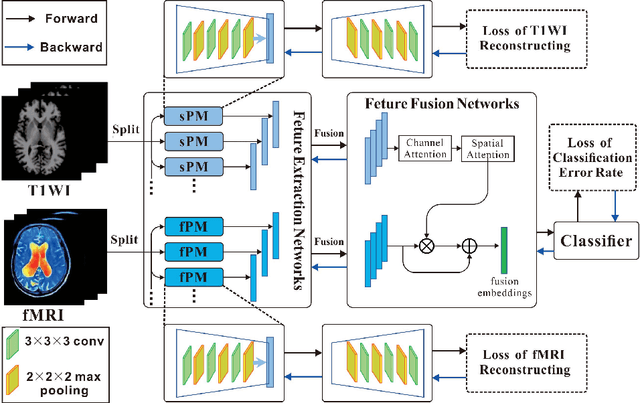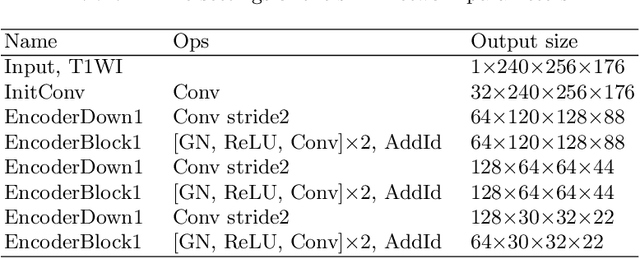Yongcheng Zong
BrainNetDiff: Generative AI Empowers Brain Network Generation via Multimodal Diffusion Model
Nov 09, 2023Abstract:Brain network analysis has emerged as pivotal method for gaining a deeper understanding of brain functions and disease mechanisms. Despite the existence of various network construction approaches, shortcomings persist in the learning of correlations between structural and functional brain imaging data. In light of this, we introduce a novel method called BrainNetDiff, which combines a multi-head Transformer encoder to extract relevant features from fMRI time series and integrates a conditional latent diffusion model for brain network generation. Leveraging a conditional prompt and a fusion attention mechanism, this method significantly improves the accuracy and stability of brain network generation. To the best of our knowledge, this represents the first framework that employs diffusion for the fusion of the multimodal brain imaging and brain network generation from images to graphs. We validate applicability of this framework in the construction of brain network across healthy and neurologically impaired cohorts using the authentic dataset. Experimental results vividly demonstrate the significant effectiveness of the proposed method across the downstream disease classification tasks. These findings convincingly emphasize the prospective value in the field of brain network research, particularly its key significance in neuroimaging analysis and disease diagnosis. This research provides a valuable reference for the processing of multimodal brain imaging data and introduces a novel, efficient solution to the field of neuroimaging.
Multiscale Autoencoder with Structural-Functional Attention Network for Alzheimer's Disease Prediction
Aug 09, 2022



Abstract:The application of machine learning algorithms to the diagnosis and analysis of Alzheimer's disease (AD) from multimodal neuroimaging data is a current research hotspot. It remains a formidable challenge to learn brain region information and discover disease mechanisms from various magnetic resonance images (MRI). In this paper, we propose a simple but highly efficient end-to-end model, a multiscale autoencoder with structural-functional attention network (MASAN) to extract disease-related representations using T1-weighted Imaging (T1WI) and functional MRI (fMRI). Based on the attention mechanism, our model effectively learns the fused features of brain structure and function and finally is trained for the classification of Alzheimer's disease. Compared with the fully convolutional network, the proposed method has further improvement in both accuracy and precision, leading by 3% to 5%. By visualizing the extracted embedding, the empirical results show that there are higher weights on putative AD-related brain regions (such as the hippocampus, amygdala, etc.), and these regions are much more informative in anatomical studies. Conversely, the cerebellum, parietal lobe, thalamus, brain stem, and ventral diencephalon have little predictive contribution.
 Add to Chrome
Add to Chrome Add to Firefox
Add to Firefox Add to Edge
Add to Edge